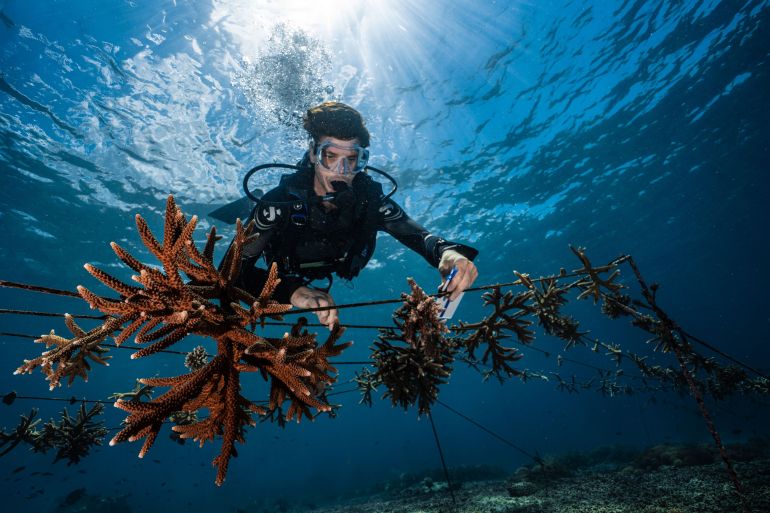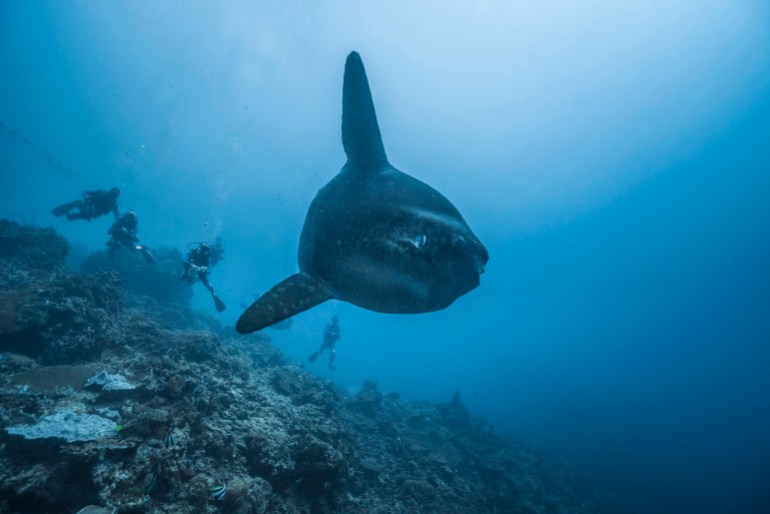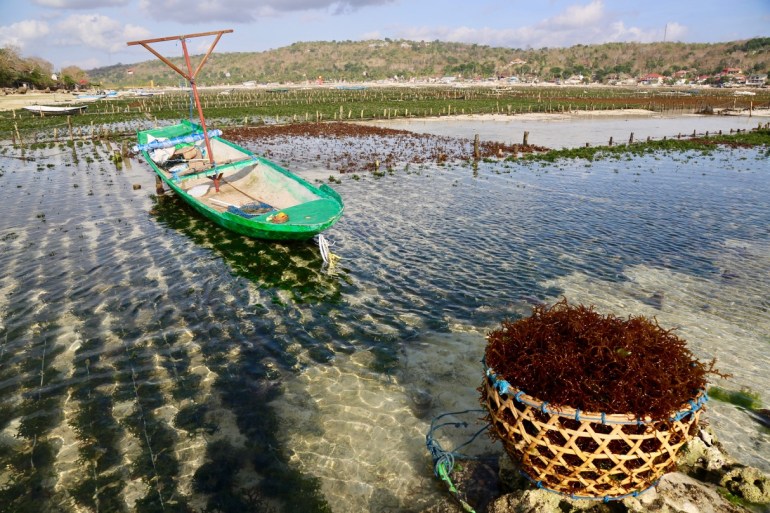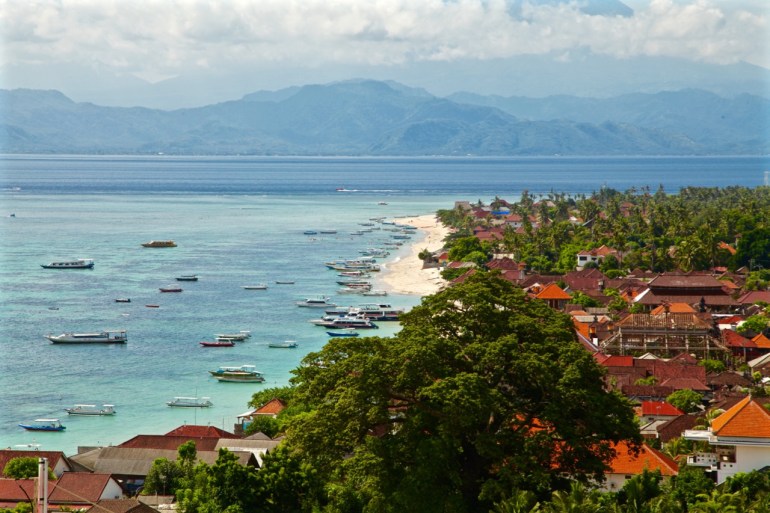Indonesia leads the way in restoring coral reefs, scientists say
Researchers at Java’s IPB University say Indonesia is doing more to restore coral reefs than any other country on Earth.

Penida Archipelago, Indonesia – With wide-scale deforestation, some of the world’s most polluted cities and rivers, and wildfires so vast they often blanket neighbouring countries in smog, Indonesia is one of the world’s most high-profile environmental offenders.
But when it comes to coral reefs, the rapidly industrialising Southeast Asian nation is doing more to restore the delicate marine ecosystems than any other country on the Earth, according to a soon-to-be-released survey, which was shown to Al Jazeera ahead of publication.
Keep reading
list of 4 itemsAt least 3 killed as moderate earthquake rocks Bali
Students drown during river clean-up in Indonesia’s West Java
7,000-year-old Indonesian woman reshapes views on early humans
The study shows Indonesia has more than 500 coral reef restoration projects.
“In recent years there has been a huge effort to restore reefs all over the world. But in terms of the number of documented projects, Indonesia is the world leader,” said Tries Razak, scientist researching coral reef restoration at Java’s IPB University who led the survey. “It’s an amazing achievement and goes hand-in-hand with an ambitious government plan to create 30 million hectares of Marine Protected Areas to ensure coral reefs in Indonesia do not disappear in our generation.”
The findings coincide with a report released by Global Coral Reef Monitoring Network earlier this month showing global warming helped wipe out 14 percent of the world’s coral reefs between 2009 and 2018.
Southeast Asia’s so-called Coral Triangle, where Indonesia is situated and which is home to nearly a third of the world’s coral reefs, was not hit as hard by the warming waters and in some cases showed recovery, the report found.
“Indonesia is the one place in the world where most of the research and restoration has been done to stabilise underwater rubble since the early 1990s,” said Queensland University’s Peter Mumby, a leading researcher on the resilience of coral reef ecosystems.
“They are far ahead of Australia.”

Expert advice
Australia, which is about to kick-start a $72m plan to repair extensive climate-change-spurred damage to the Great Barrier Reef, is looking to Indonesia for advice.
“Essentially we are asking what role scaled-up restoration can play in making our reefs healthier in the future? But as we haven’t invested much in the space until now, we are turning to researchers in Indonesia and studying the methods they’ve developed over the past 10 years,” said Mumby.
Among the researchers is Andrew Taylor, a marine biologist from Canada based in the Penida Archipelago, three small islands southwest of Bali where scuba divers from around the world come to marvel at ocean sunfish, the world’s heaviest bony fish which can weigh as much as a tonne.
The islands’ reefs are under stress from sewage runoff from tourism developments, extractive industries like fishing and seaweed farming and the construction of a sizeable new ferry port in a picturesque channel.
In 2018, Taylor started a pilot coral restoration project funded by his non-governmental organisation, Blue Corner Marine Research, on Nusa Penida, the largest of the three islands.
“We chose this area because it’s one the areas where the coral is most impacted,” he said. “With so many boats anchoring and dragging fishing nets, the reefs have turned to rubble.”

Spanning 300 metres (984 feet), the project features hard corals tied to 400 metal frames coated with epoxy.
“The idea is to put some kind of structure down that provides a base for coral to grow,” Taylor explained. “Within a couple of years they were completely covered in coral with lots of fish hanging about. Later we improved it by rolling out chicken wire between the frames to stabilise the rubble. After about a year, sponges and soft coral began regenerating while the wire disintegrated. Looking at the before and after shots, it’s like night and day.”
Reefs and jobs
On nearby Bali, the $7.5m Indonesian Coral Reef Garden (ICRG) was devised to regenerate coral reefs damaged by runaway tourism development and river pollution over the past 50 years while providing temporary work for 10,000 people who lost their jobs in tourism during the pandemic.
The Maritime Affairs and Fisheries Ministry, which funded the project, claims new reefs could also create new jobs in marine tourism in the future.
The largest coral restoration project in the world, ICRG is made up of just under one million structural units sunk at five different parts on the island.
Work began in January in Lovina, a once-bustling tourist district on Bali’s north coast where 250 locals were hired to build 1,000 ‘bio-rocks’ – large concrete and metal bells featuring holes to attach hard coral. The project’s final section, completed last month, employed 1,000 locals in Nusa Dua on the south of the island to build 8,000 steel pipes, each 2 metres (6.5 feet) long, as substructures for coral gardens.
“Instead of giving us money, the idea was to give us work and create 20 hectares of coral gardens with 20 new dive sites,” said Rafi, one of 400 unemployed dive instructors who were hired to lay the pipes underwater. Like many Indonesians, he goes by only one name. “The ministry also supplied diving equipment to the government of Nusa Dua so people from the village can go there every week to clean the reef.

“As a person who’s worked in the dive industry for six years, and one who hopes to return to work when the pandemic is over, it is really good to see the government is investing in restoring coral reefs – and creating new ones in places that never had them before,” he says.
Long-term monitoring
Razak at IPB University says the ICRG project was beneficial for Bali’s unemployed but is uncertain if it will deliver the same benefits to Bali’s reefs – irrespective of whether the selected areas had coral reefs in the past.
“Ten years ago I went to inspect a site on the east coast of Sumbawa Island where a mining company had planted a few hundred artificial reefs in two different bays – one with a soft sand bottom that never had coral before and another where there once was a reef that had been destroyed by fishing,” she said. “Interestingly, the site that never had coral was doing really well. But at the other site, no coral grew.
“Growing coral is not growing trees, where you plant it and it will grow,” she explained. “The science is still very fuzzy. It might be successful in one spot but two metres away, the hydro-dynamic factors or supply of larvae will be slightly different and it won’t work there. And as most of the restoration projects in Indonesia are being done without preliminary studies, artificial reefs are not planted in places where they are needed most.”
Another roadblock to successful planting, Razak says, is the lack of monitoring of results. “I have only seen a handful of projects in the country where long-term monitoring, which is the larger and more costly part of reef regeneration, were included in the plans. Most of these projects are just one-off installations. They start something and leave it without learning anything from the hundreds of existing projects.
“Without this kind of centralised long-term approach, we’ll never be able to perfect the science of coral reef regeneration no matter how many reefs we grow.”

But for Mitchell Ansiewicz, owner of Ohana’s beach resort, and other residents of the Penida Archipelago, any coral regeneration is a good thing.
“The condition of the coral surrounding these islands affects nearly everyone, from local seaweed farmers, to dive operators, to the fisherman, surfers and landowners who get natural protection from the reefs,” Ansiewicz said. “Anything that can be done to make more of it is a plus.”